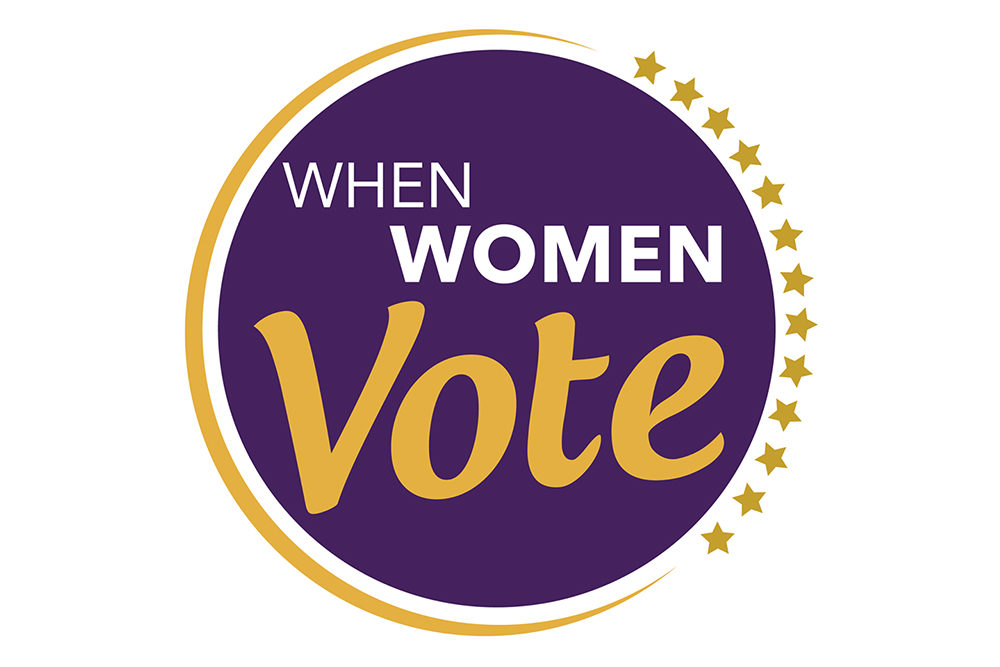
Guest Blog: When Women Vote
Change the Way We Vote, and More Women Vote
By Stephanie Donner and Amber McReynolds
The Tuesday Club
 EVERY TUESDAY, beginning in 1910, Deborah Given set the lunch dishes in the exact same place on the large dining table in her El Paso, Texas, home. Each of the guests of the Tuesday Club had assigned seating and they shared a love of companionship but also despair. Because they were all women, none of them could vote.
EVERY TUESDAY, beginning in 1910, Deborah Given set the lunch dishes in the exact same place on the large dining table in her El Paso, Texas, home. Each of the guests of the Tuesday Club had assigned seating and they shared a love of companionship but also despair. Because they were all women, none of them could vote.
Meetings and clubs like these were held in living rooms across the country as our suffragist sisters tried to gain equal rights at the ballot box and in business. Other clubs designed cookbooks with campaign materials tucked inside—literal recipes for subversion. Clubs and cookbooks were the tools women used to convince husbands and political leaders to take up the cause of suffrage.
In 2020, we celebrate the 100th anniversary of the achievement of the women’s right to vote in the United States, though Colorado was the first state to enact equal suffrage through popular vote in 1893. While women achieved national suffrage 100 years ago, so many women still lack the opportunity to vote.
A system built on bias
Our system of voting was established by white men, for white men, and is still largely inconvenient for most Americans. Bias was built into our election system and we have not made enough progress to remove the bias. Barriers such as restrictive voter registration and deadlines and inconvenient or nonexistent voting options preclude many, for instance college students, from participating in our democracy. Americans who want to vote are conditioned to show up to a designated polling place, wait in a long line, and finally cast a ballot. This inconvenience is the best-case scenario. Worst-case scenarios include voters who have been cleared from the voting rolls, have gone to the wrong polling place, or have completely missed the registration deadline.
There is less bureaucratic red tape and fewer institutional hurdles to getting a driver’s license, buying an AR-15, filling a prescription for a controlled substance, and getting married than there is in some places to cast a vote for a county commissioner, a judge, a member of Congress, or president of the United States.
Inconvenient voting options hurt turnout
Inconvenient voting options limit turnout. The 2016 presidential election and the 2018 midterm election saw a record number of voters and turnout, but they still accounted for only 61 percent and 50 percent of eligible voters.
Western states, including Colorado, have been on the forefront of voting reform just as they were with suffrage. Those states have implemented more convenient options such as same day registration, early voting, voting at home, primary reform, and independent redistricting commissions. States that have implemented voting reforms like Colorado are the states with the highest voter turnout. They are also the states with the highest women’s representation. Nevada now has over 50 percent women elected in their legislature, women make up 45 percent of the legislature in Colorado, and Oregon and Washington follow closely.
When women vote, women’s issues are prioritized
We believe it is that simple. Change the way we vote, and more people vote. And when more people vote, more women get elected. The more women we have in elected office, the more we will prioritize women’s issues. That is the premise of our book “When Women Vote.” Change the infrastructure that created the bias and women, who are 51 percent of our population, will gain larger representation.
We met during the 2013 legislative session while working on election reform, and while both pregnant with our second children. We created our own Tuesday Club to advocate for change.
We hope you will read “When Women Vote” to learn more about the Tuesday Club, and also join our movement.
Stephanie F. Donner is the executive director for Emily Griffith Technical College and served as chief legal counsel for former Colorado Gov. John Hickenlooper. Amber McReynolds is the executive director for the National Vote At Home Institute and is the former director of elections for Denver. Their book “When Women Vote” highlights the challenges Americans, particularly women, face in the current voting process and the amazing things that happen with reform.
The Women’s Foundation of Colorado is a nonpartisan organization. The opinions of guest bloggers are their own and do not necessarily reflect the opinions or positions of The Foundation.

